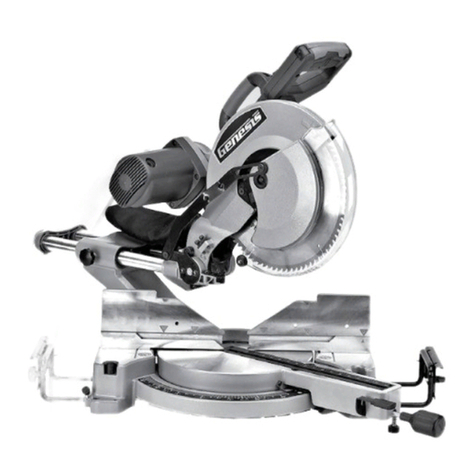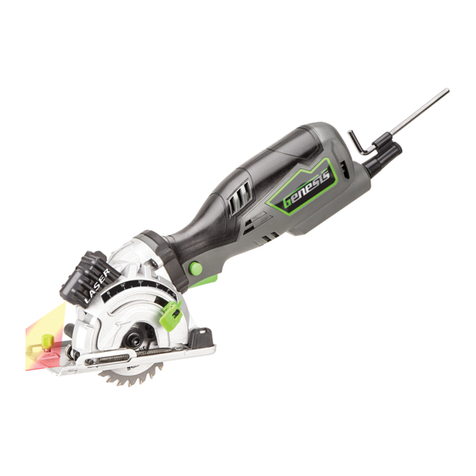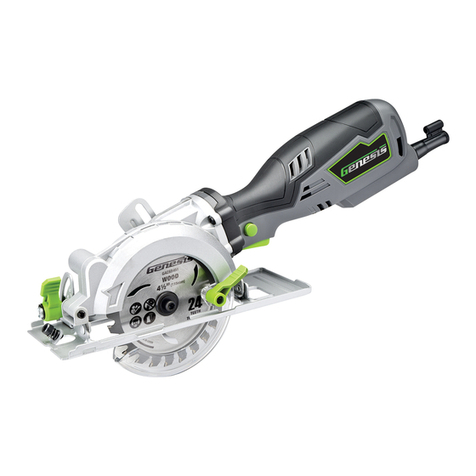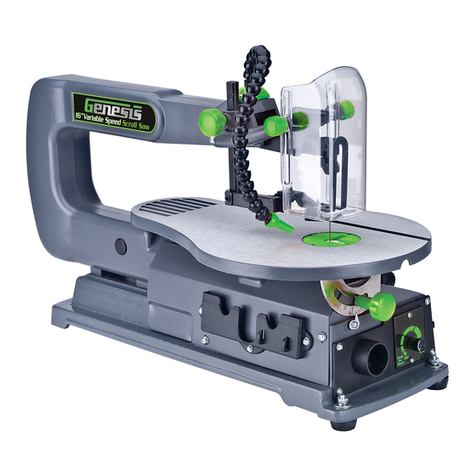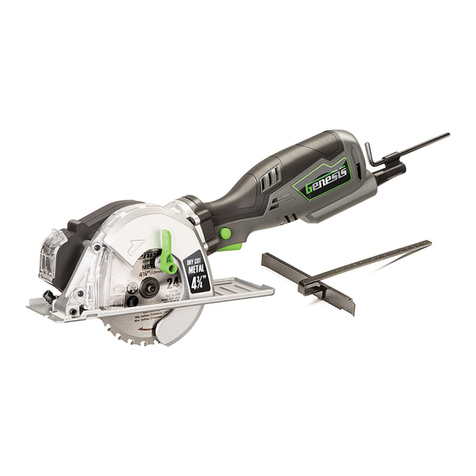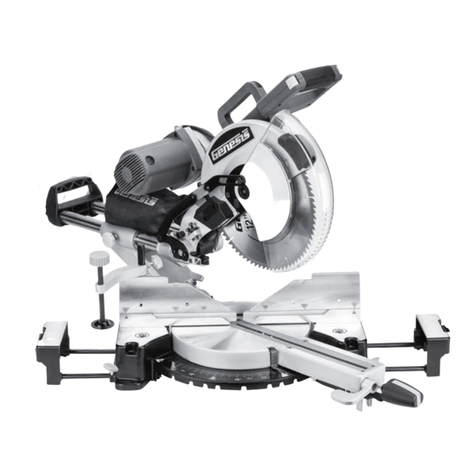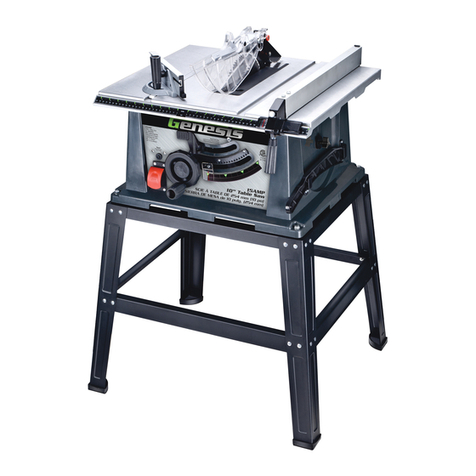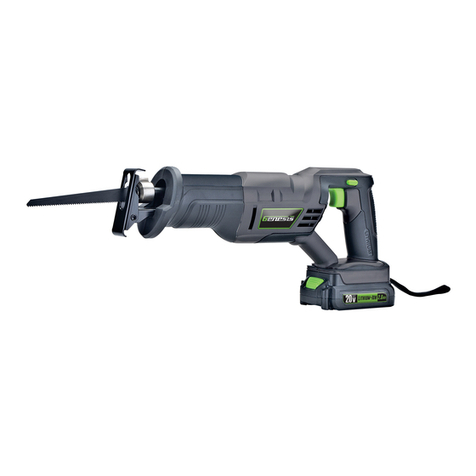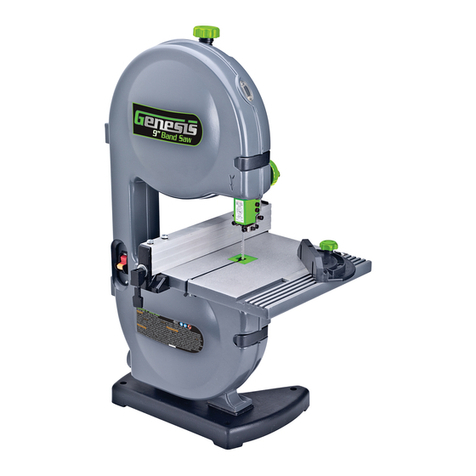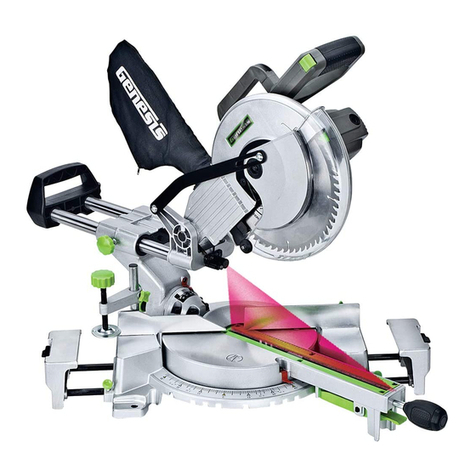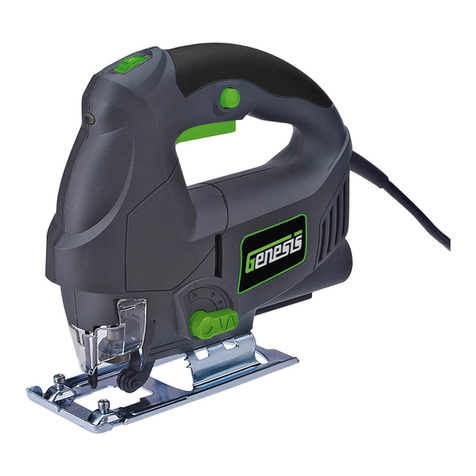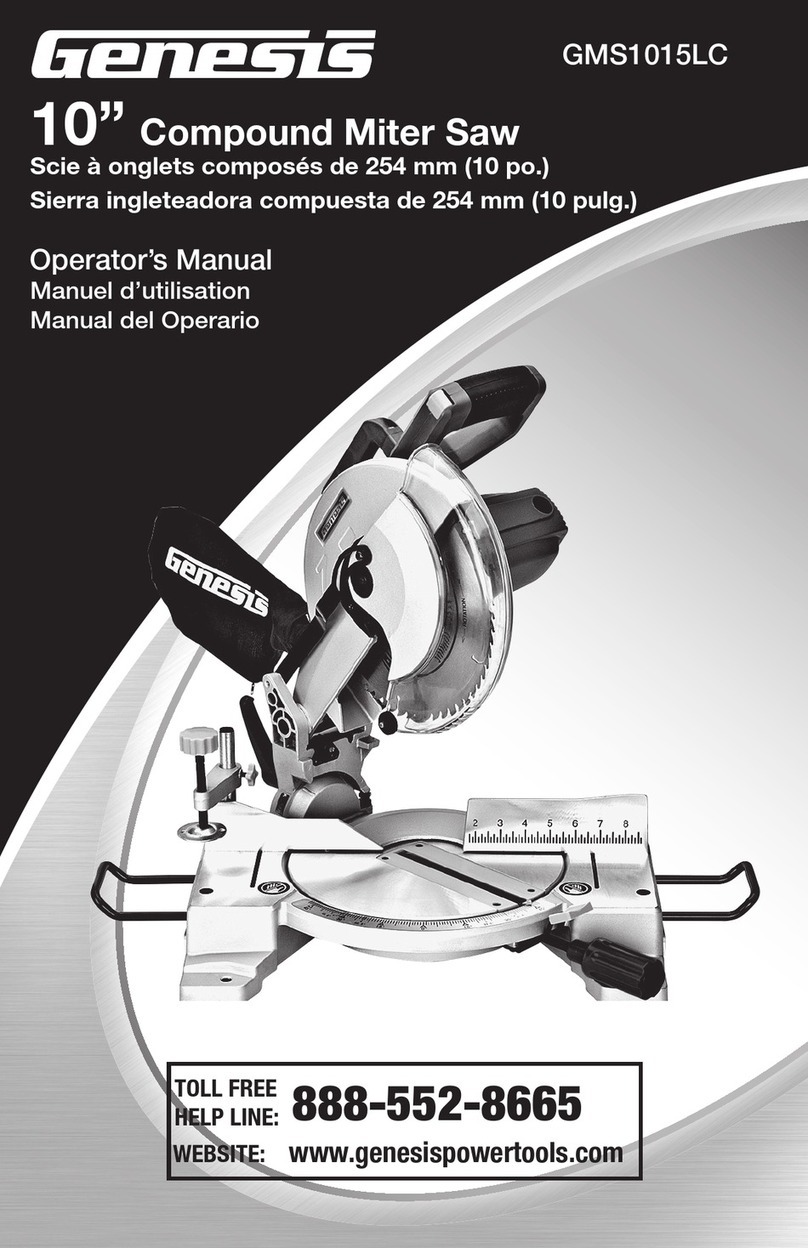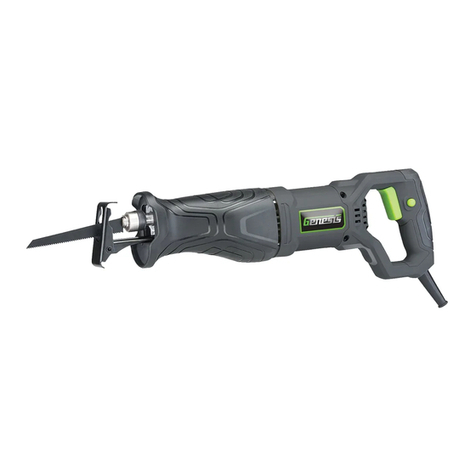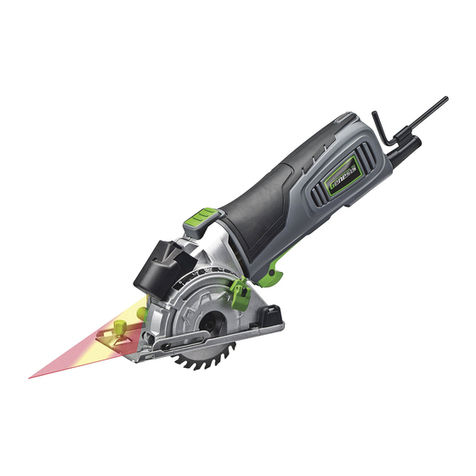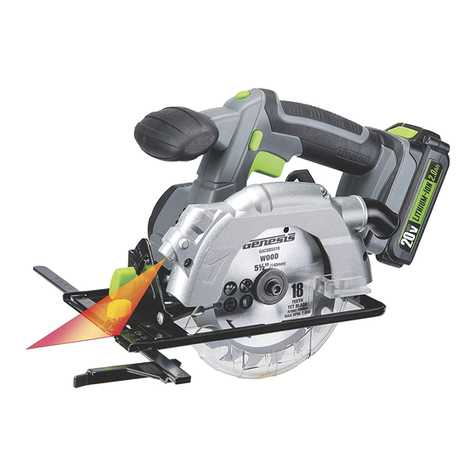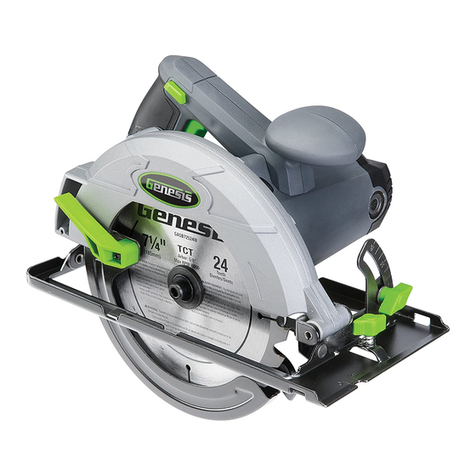
English
12 Amp, 7-1/4" Circular Saw
Operator’s Manual GCS120
•
When ripping, always use a rip fence or straight edge guide
.
This improves the
accuracy of cut and reduces the chance for blade binding.
•
Always use blades with correct size
and shape (diamond vs. round) arbor holes. Blades that
do not match the mounting hardware of the saw will run eccentrically, causing loss of control
.
•
Never use damaged or incorrect blade washers or bolts. The blade washers and bolt
were specially designed for your saw, for optimum performance and safety of operation.
•
Causes and operator prevention of Kickback:
Kickback is a sudden reaction to a pinched, bound or misaligned saw blade, causing an uncontrolled saw to lift
up and out of the work piece toward the operator.
* When the blade is pinched or bound tightly by the kerf closing down, the blade stalls and the motor reaction
drives the unit rapidly back toward the operator.
* If the blade becomes twisted or misaligned in the cut, the teeth at the back edge of the blade can dig into
the top surface of the wood causing the blade to climb out of the kerf and jump back toward the operator.
* Kickback is the result of tool misuse and/or incorrect operating procedures of conditions and can be avoided
by taking proper precautions as given below:
> Maintain a firm grip on the saw and position your body and arm in a way that allows you to resist
KICKBACK forces. KICKBACK forces can be controlled by the operator, if proper precautions are taken.
> When blade is binding, or when interrupting a cut for any reason, release the trigger and hold the saw
motionless in the material until the blade comes to a complete stop. Never attempt to remove the
saw from the work or pull the saw backward while the blade is in motion or KICKBACK may occur.
Investigate and take corrective actions to eliminate the cause of blade binding.
> When restarting a saw in the work piece, center the saw blade in the kerf and check that teeth are not
engaged into the material. If saw blade is binding, it may walk up or KICKBACK from the work piece as
the saw is restarted.
> Support large panels to minimize the risk of blade pinching and KICKBACK. Large panels tend to sag
under their own weight. Supports must be placed under the panel on both sides, near the line of cut and
near the edge of the panel.
> Do not use dull or damaged blades. Unsharpened or improperly set blades produce narrow kerf, causing
excessive friction, blade binding, and KICKBACK.
> Blade depth and bevel adjusting locking levers must be tight and secure before making cut. If blade
adjustment shifts while cutting, it will cause binding and KICKBACK.
> Use extra caution when making a “Pocket Cut” into existing walls or other blind areas. The protruding
blade may cut objects that can cause KICKBACK.
•
Do not leave the tool running. Operate the tool only when hand-held.
•
When operating the tool from an elevated position,
be aware of people or things
beneath you.
•
Always hold the tool firmly in your hands before switching the tool “ON”.
The
reaction to the torque of the motor as it accelerates to full speed may cause the tool to twist.
•
Wear eye and hearing protection.
Always use safety glasses with side shields. Unless otherwise
specified, everyday glasses provide only limited impact resistance, they are not safety glasses. Use only
certified safety equipment; eye protection equipment should comply with ANSI z87.1 standards. Protective
hearing equipment should comply with ANSI s3.19 standards.
•
Protect your lungs.
Wear a face or dust mask if the operation is dusty. Following this rule will reduce
the risk of personal injury.
WARNING: Read and understand all warnings, cautions and operating
instructions before using this equipment. Failure to follow all instructions listed below
may result in electric shock, fire and/or serious personal injury.
SAVE THESE INSTRUCTIONS
